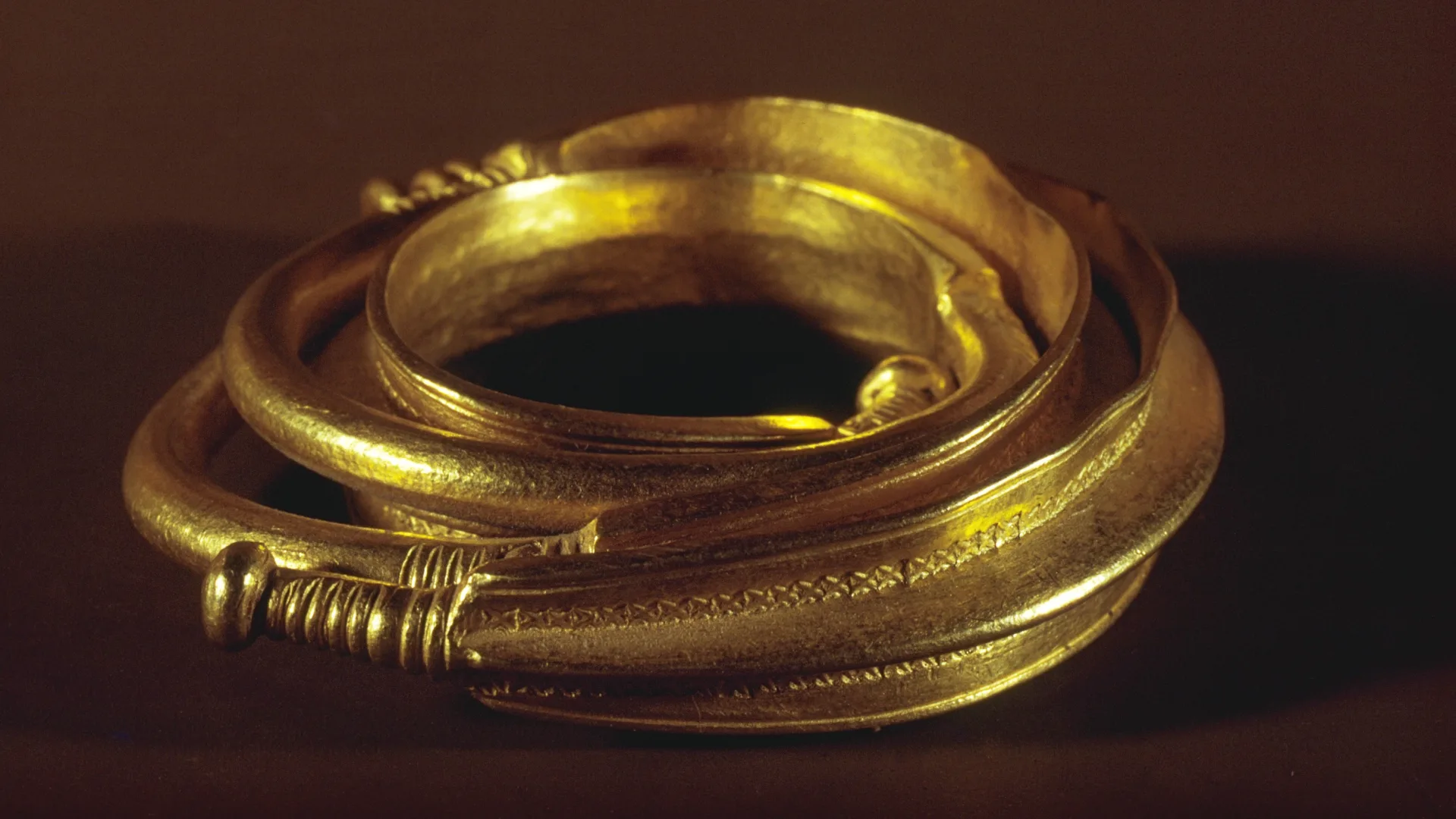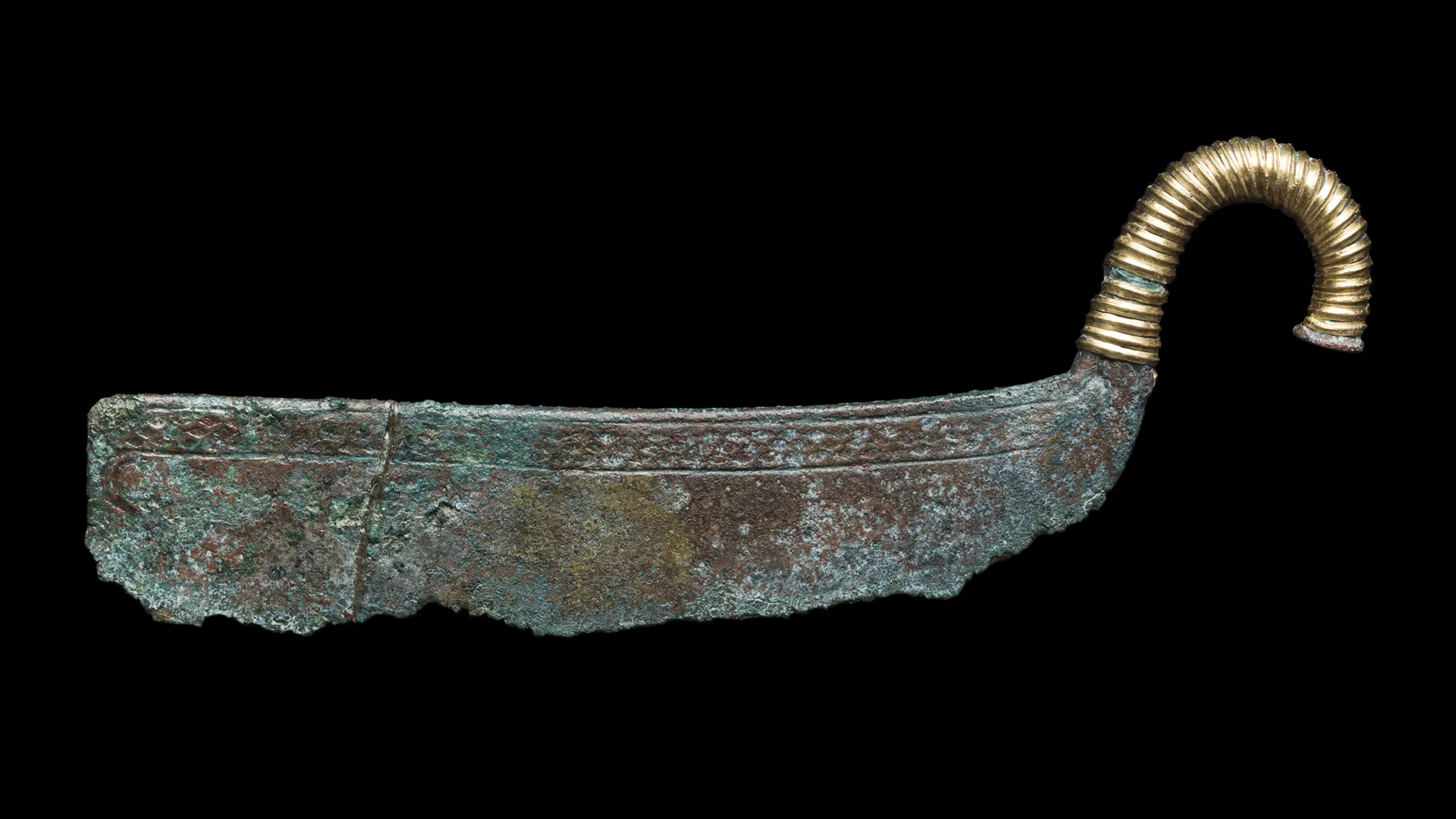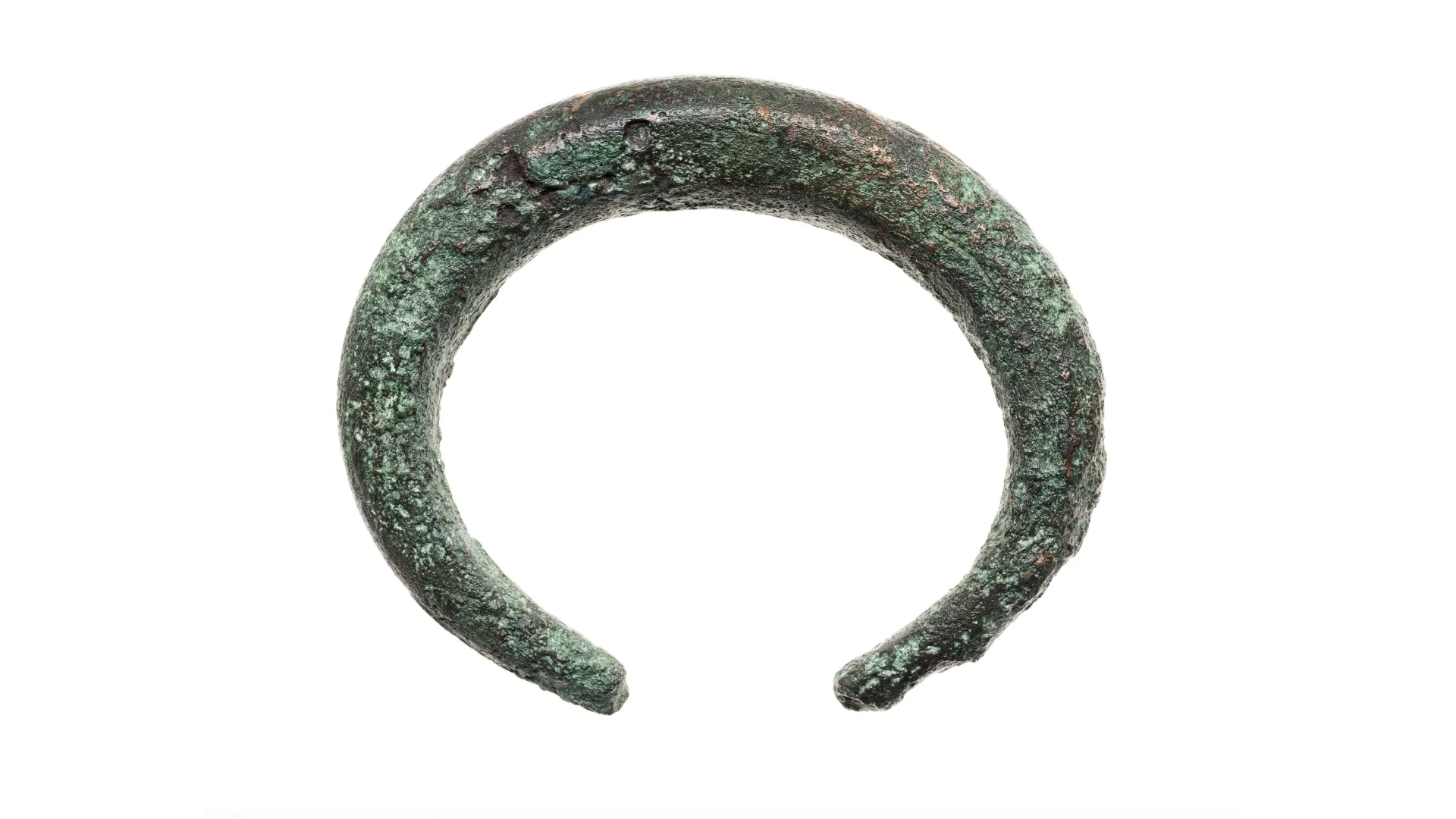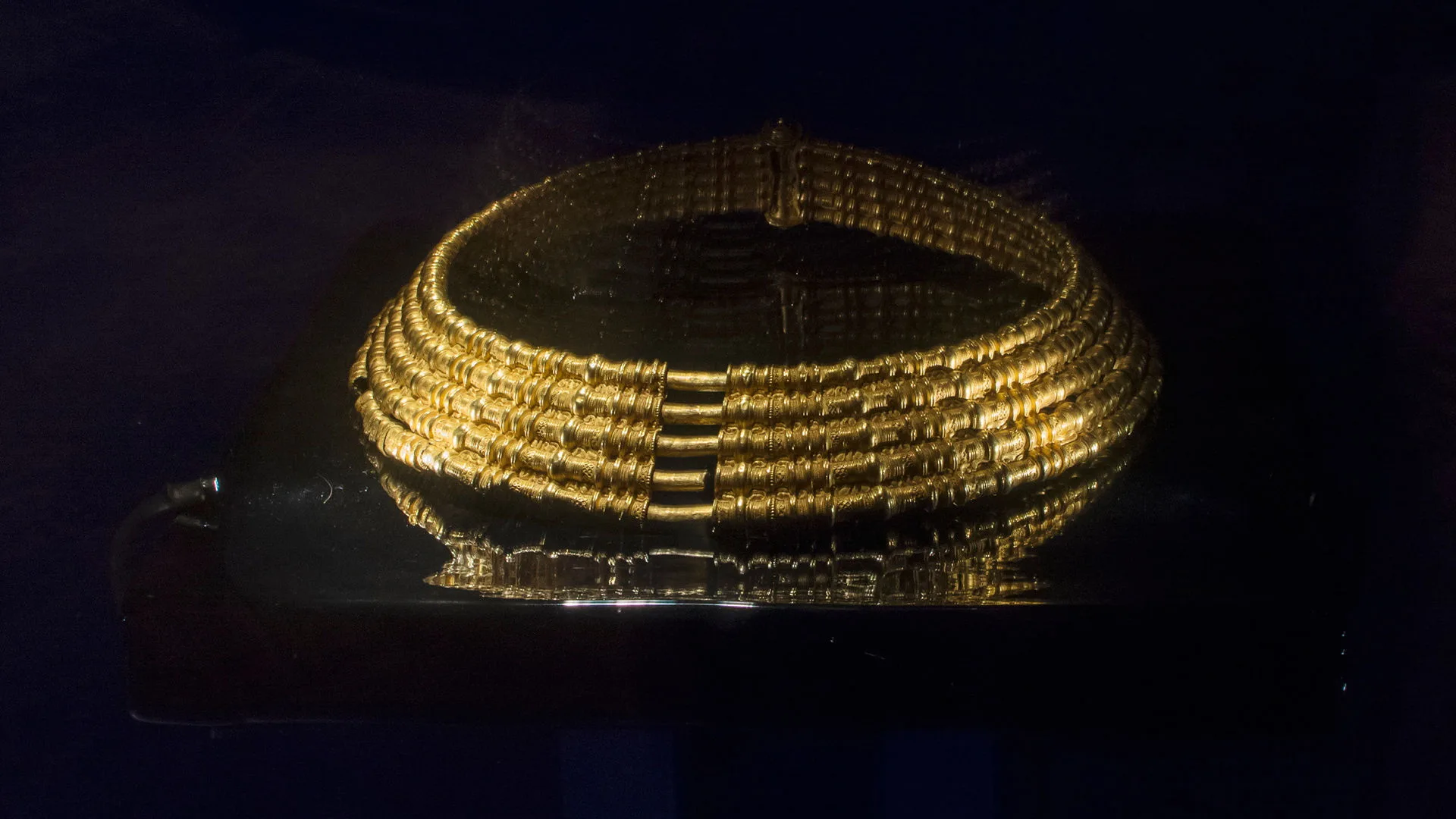The horse – status symbol and sacrificial offering
Stone Age
12,000 BC – 1700 BC
Bronze Age
1700 BC – 500 BC
Iron Age
500 BC – AD 1100
The two bronze horse heads were found as part of a large so-called hoard at Rolkegärdet, Svartarp, in the parish of Åsle, Västergötland. They were included in one of the largest Bronze Age votive deposits discovered in Sweden and are now preserved in the collections of the Swedish History Museum. The hoard also contained at least 27 neck rings, several spears, arm rings and axes. The entire find dates to the Late Bronze Age, around 900–700 BC.
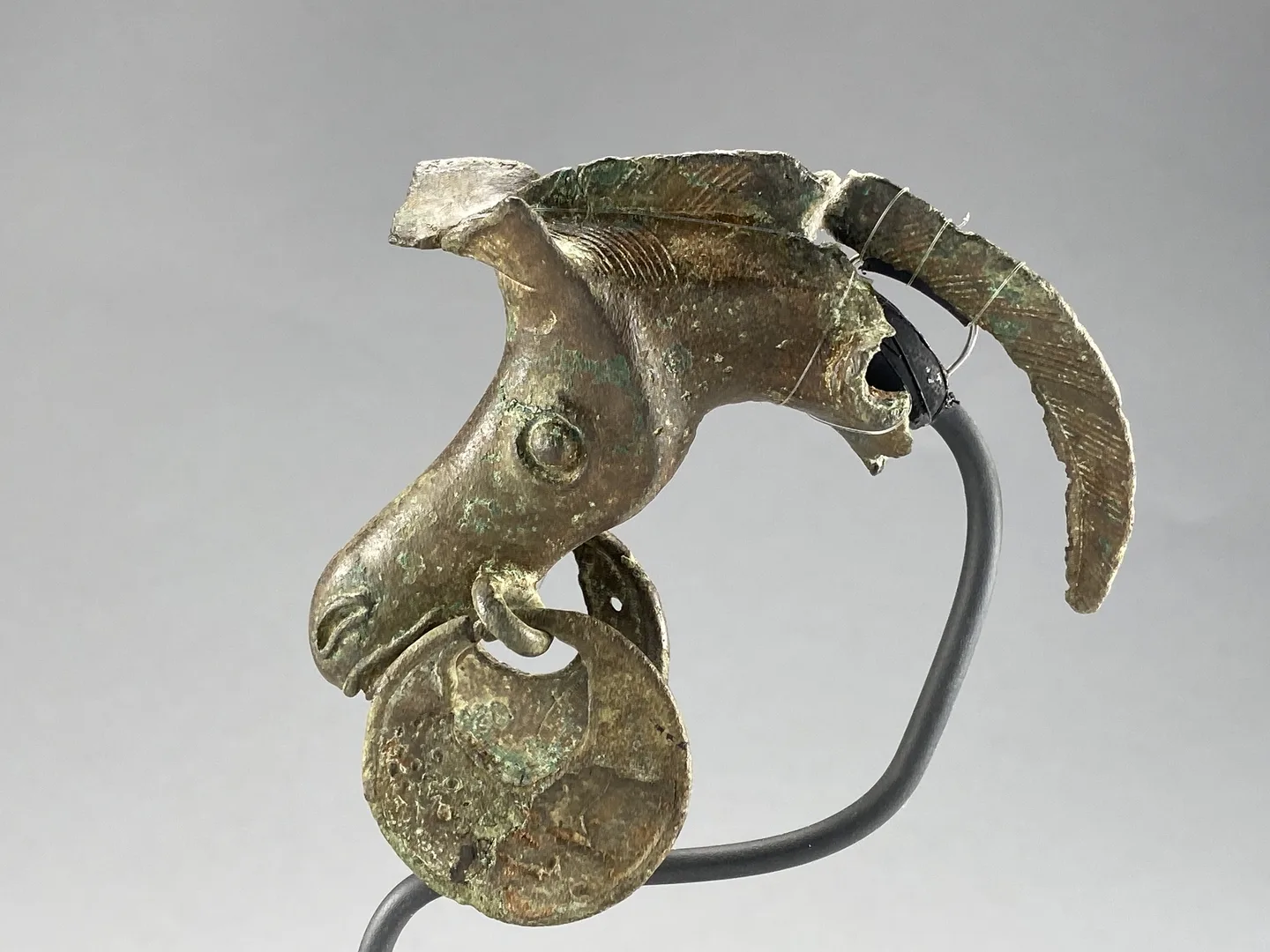
Bronze horse head
The two horse heads were once mounted on a ceremonial bronze staff with a wooden shaft. The staff may have been carried in procession or mounted on a cart. The horses feature large ears and eyes, a crest-like mane, and a bit in their mouths fitted with crescent-shaped rattling plates. Full-sized bronze fittings were also found in the same deposit and may have belonged to actual horse bits.
During the Bronze Age, horses pulled both four-wheeled wagons and two-wheeled carts. People also believed that the sun was drawn across the sky by one or two horses. Above all, wagons were used in high-status contexts.
Miniature wagon
Outside Ystad in Skåne, archaeologists uncovered an example of a so-called cauldron wagon, dating to around 1300–1100 BC. It is the undercarriage of a miniature four-wheeled wagon that would have supported a now-missing bronze cauldron. These cauldron wagons were common on the European continent. Imagery connected with wagons, horses, and the solar wheel frequently appears in Bronze Age art. Cauldron wagons were used in ritual feasts for eating and drinking during large ceremonial gatherings.

Miniature bronze carriage from Ystad
Roughly 230 kilometres south of Ystad, a complete cauldron wagon was found in Peckatel, Germany. These wagons were probably manufactured in Central Europe. The Peckatel wagon is one of many indicators of how important international contacts were during the Bronze Age, and of the influence of continental customs.
See the Peckatel wagon on the website of The Virtual State Museum of Mecklenburg-Vorpommern
Rattling disc
Another hoard from the 6th century BC included horse bridles, fittings, bosses that once adorned horses, and dress ornaments. Many of the metal fittings are decorated with images of two waterbirds, a recurring motif. Among the items was a rattling disc, which is a round disc with hanging elements.
The disc below was part of the gear for a horse-drawn wagon and was found in Eskelhem on the island of Gotland. It may have been mounted on a pole between the horses or attached to the wagon they pulled. The disc would have jingled as the horses moved. The disc itself may have symbolised the sun, and at its top are two waterbirds shown in profile. Horses, waterbirds and the sun were all important elements in the mythology of the time.

Bronze disc with rattling pendants
On view at Historiska museet in the exhibition Forntider 1
